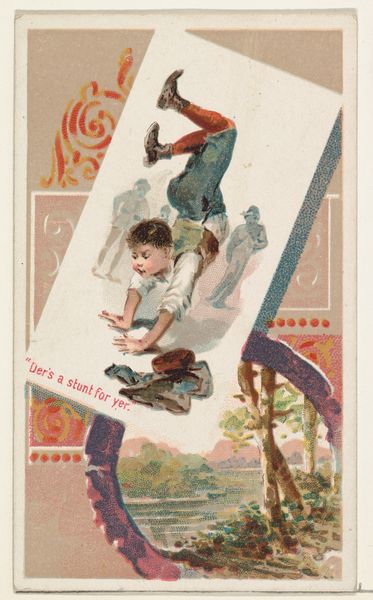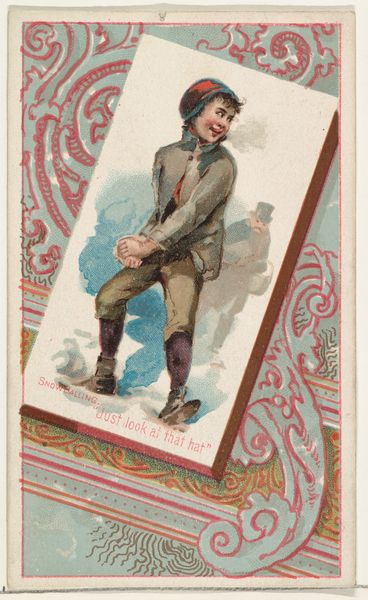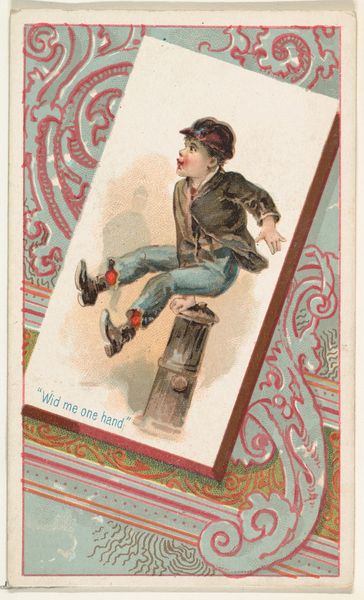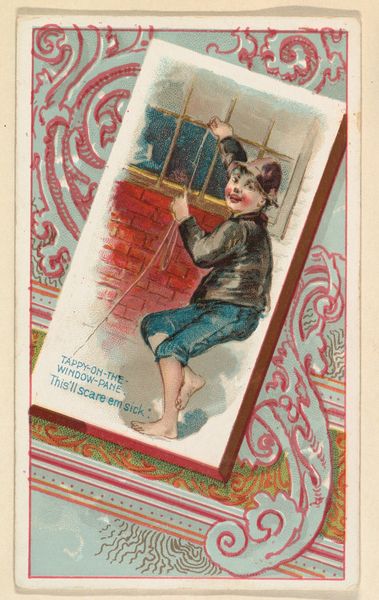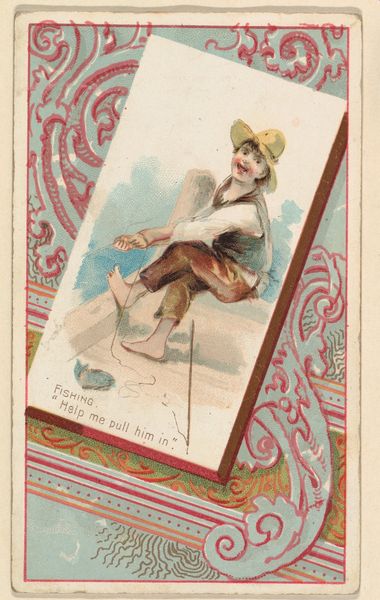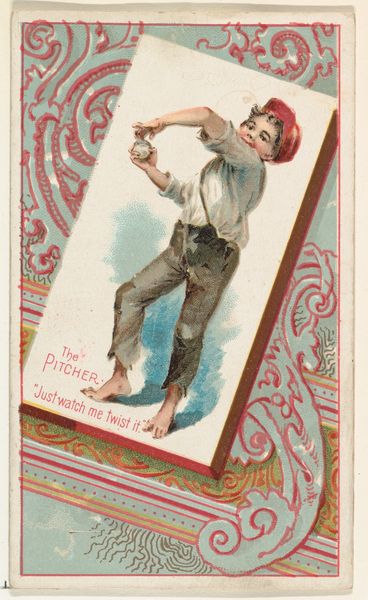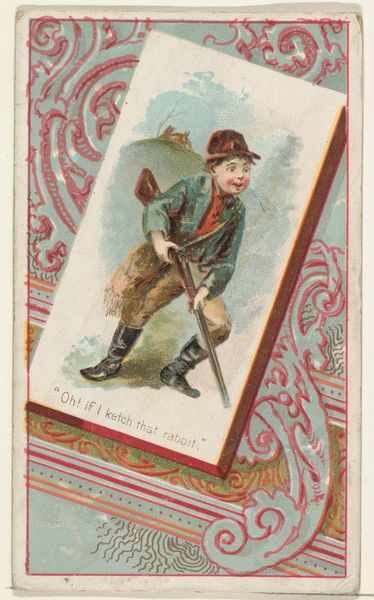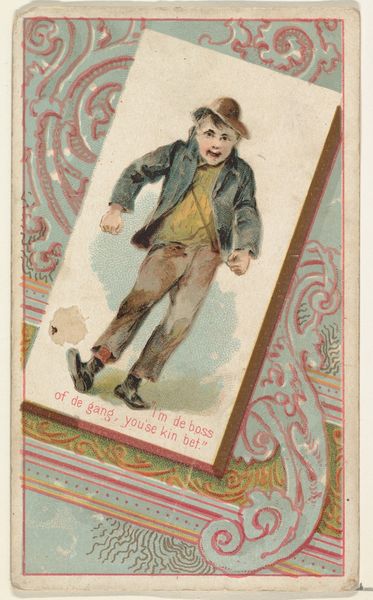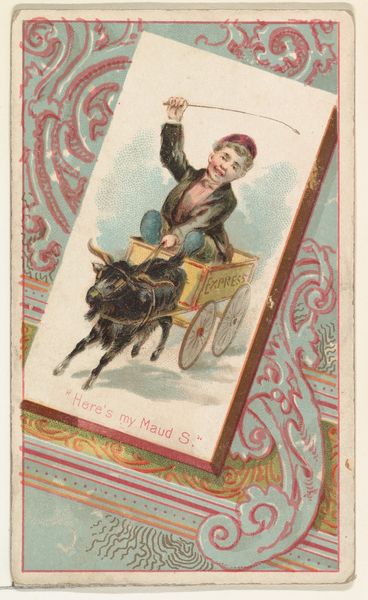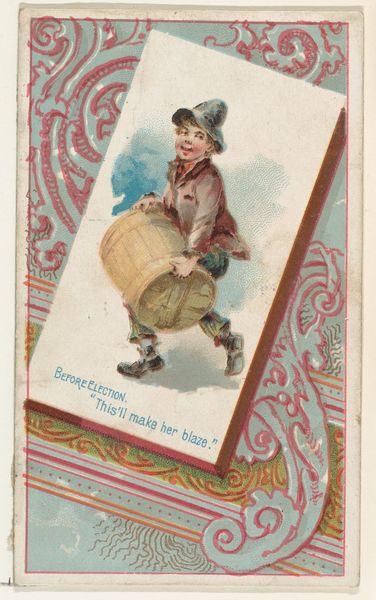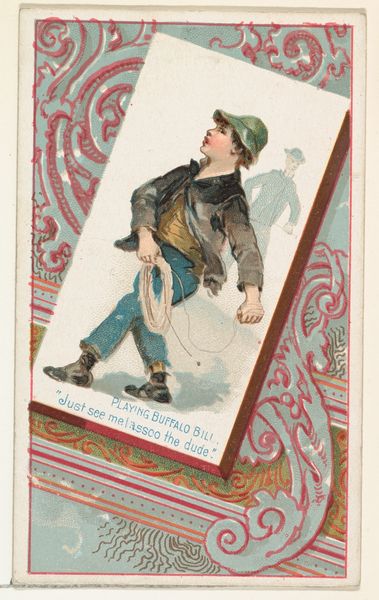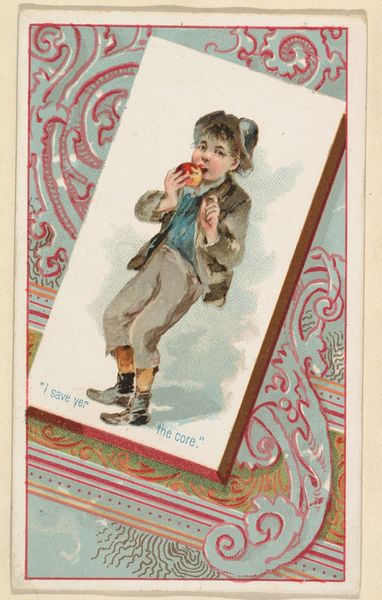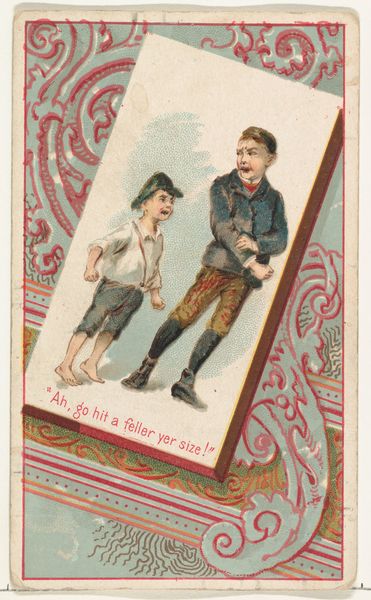
"Der's a stunt for yer," from the Terrors of America set (N136) issued by Duke Sons & Co. to promote Honest Long Cut Tobacco 1888 - 1889
0:00
0:00
drawing, print, watercolor
#
drawing
# print
#
caricature
#
traditional media
#
boy
#
watercolor
#
watercolour illustration
#
genre-painting
Dimensions: Sheet: 2 3/4 x 1 1/2 in. (7 x 3.8 cm)
Copyright: Public Domain
Editor: This is “Der’s a stunt for yer,” from the Terrors of America set, made by W. Duke, Sons & Co. around 1888-1889. It's a print with watercolor and drawing, a small trading card, actually. The composition is striking, especially with that tilted rectangle framing the main image. What's your perspective on it? Curator: The key thing that catches my eye is that this wasn't conceived as 'high art,' but a commercial piece produced to sell tobacco. Let's consider the materiality – it's mass-produced, aimed for wide distribution. Does knowing that change how we view it? Think about how labor played into this piece. Editor: It definitely makes you consider who the audience was, and how these images were consumed. The boy doing the handstand seems like pure entertainment, but tied to something as material as tobacco... Curator: Exactly! This brings up questions about labor – who designed this? Who printed it? Who consumed the tobacco, and in what social contexts was this card viewed? Also, think about what “Terrors of America” *meant* to the society consuming this card. A kid doing tricks or other immigrants? Editor: That’s a good point. It highlights how intertwined art and consumer culture were, even back then. The act of distributing this drawing encouraged a specific exchange. Curator: Precisely. And the choice of medium—the cheap print, watercolor details—speaks to a specific, accessible market. The materiality of the piece shapes its message just as much as the imagery does. How does knowing it was inexpensive and given away effect our reception? Editor: That makes you question its value in a completely different way. Curator: Yes! This seemingly simple image is a layered product of industrial processes, class dynamics, and marketing strategies. Editor: I never thought about trading cards this way, but the means of its production does radically influence my understanding of its place in society. Curator: Glad to have changed your mind. These popular works are valuable points of access when understanding our consumerist society, which includes “fine art.”
Comments
No comments
Be the first to comment and join the conversation on the ultimate creative platform.
